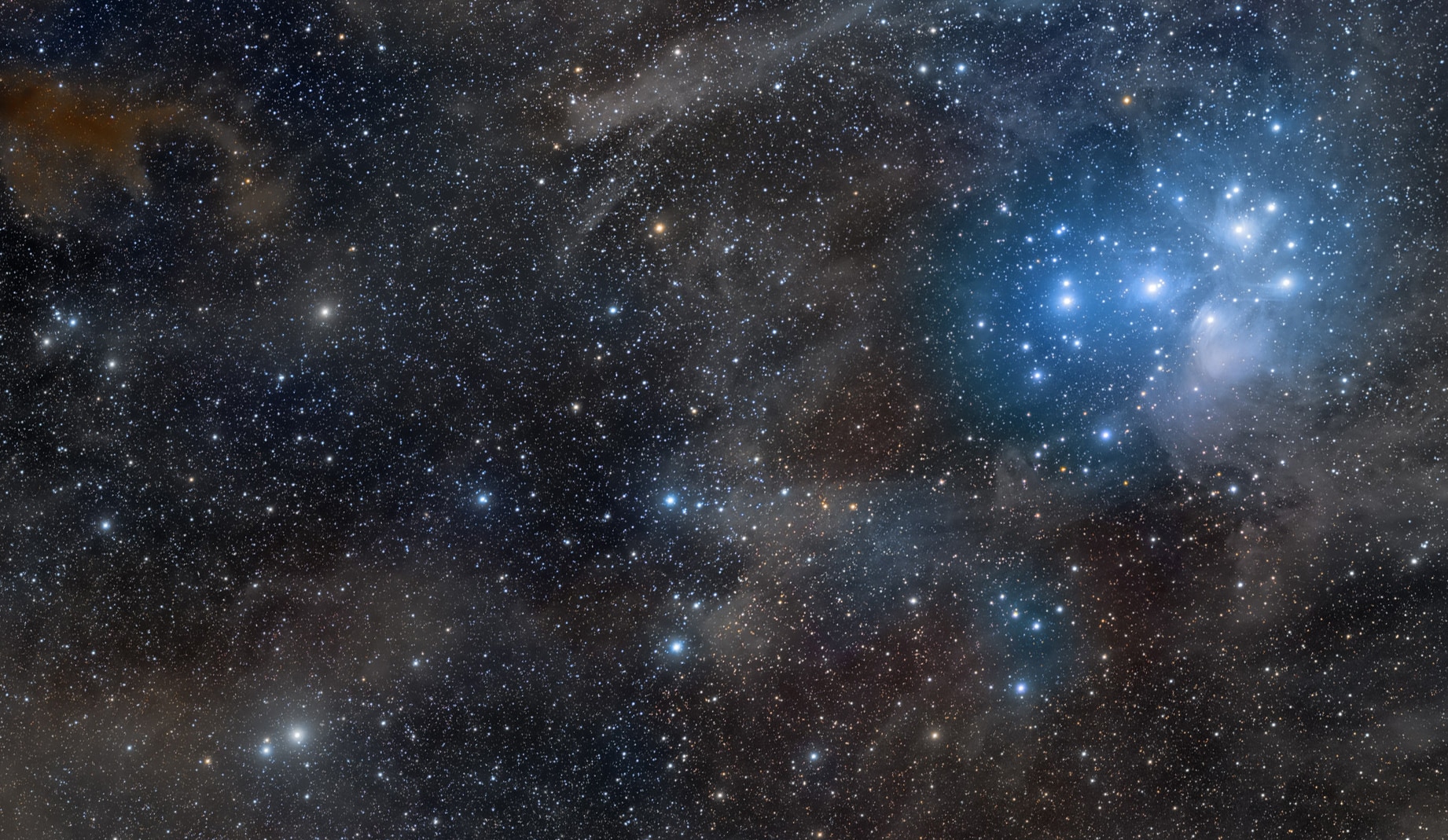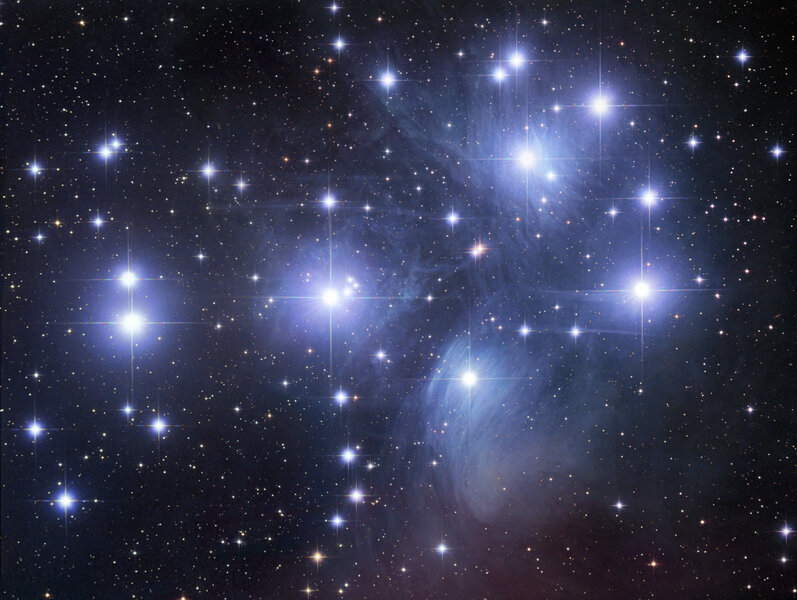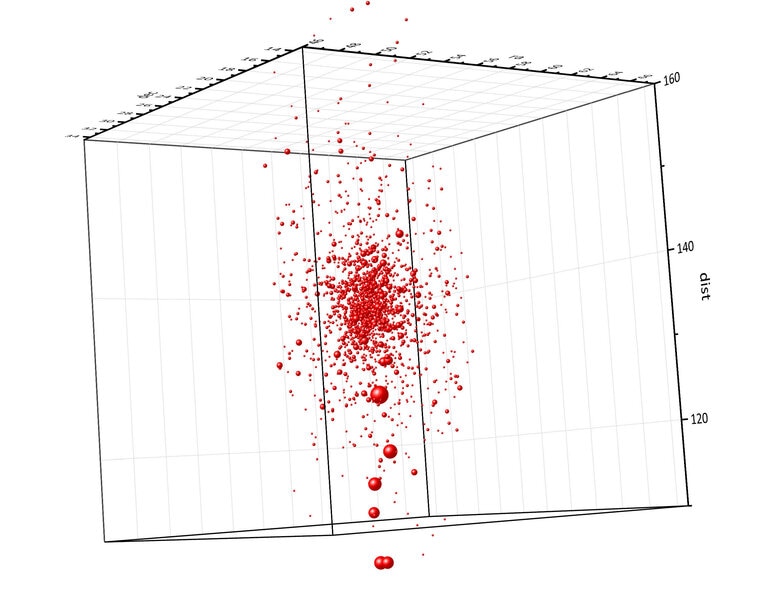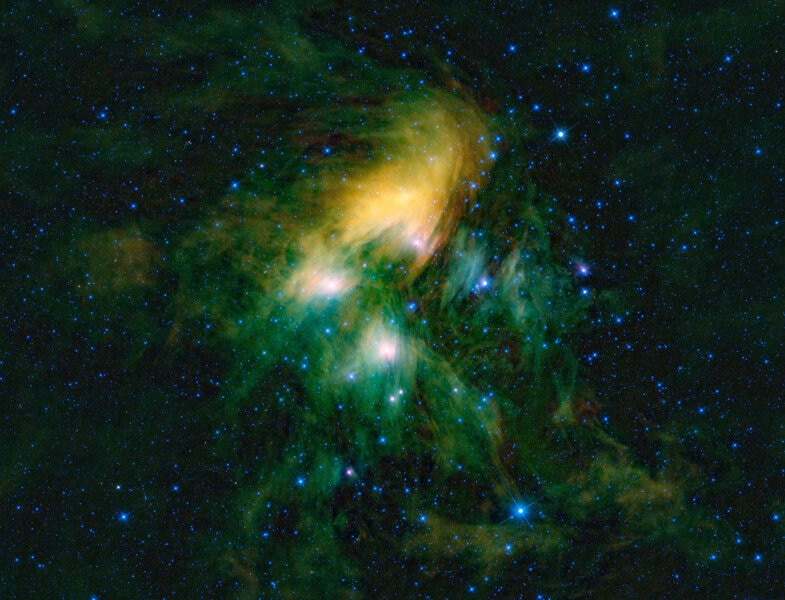Create a free profile to get unlimited access to exclusive videos, sweepstakes, and more!
How far away are the Pleiades?

I’ve written quite a bit recently about the Gaia mission, but as my excuse the recent release of a huge amount of second-generation data from the space-borne observatory is revolutionizing a lot of basic astronomical knowledge.
Sound grandiose? Well, it’s no exaggeration! Gaia is precisely measuring the positions, movements, and colors of more than a billion stars. There’s almost no way to do that without overturning a basic premise or two.
For example, Polaris is a special kind of star that we use to find the distances to other galaxies, and Gaia helped nail down how far away it is from us — the very basis of our cosmic distance ladder — better than ever before. It found a cluster of stars previously unknown to us, and solved an old mystery about an apparent double star that’s been a pain in the neck of amateur astronomers for decades.
That’s just a taste, a nibble, an amuse-bouche. There’s plenty more, and boy howdy I have a pile of notes for more articles. But there was one particular mystery I was excited for Gaia to solve, one that’s been brewing for many years and is actually pretty important. And it’s a simple one to ask:
How far away are the Pleiades?
Simple to ask, but hard — very hard — to answer with any degree of accuracy. Astronomers have been trying to answer this question for a long time, and things were going well until suddenly they were going not well at all. Different methods yield different answers, and a recent mission that was supposed to help made things worse. I was truly hoping that Gaia would put the nail in the coffin of this conundrum, and it actually may have… but in some ways, I fear, things have gotten weirder.
OK, first: The Pleaides* is a cluster of very roughly 1,500 stars in the constellation of Taurus. The brightest few of them form a distinctive dipper shape (and are commonly mistaken for the Little Dipper) and are of roughly the same brightness, making them a lovely and striking sight. Binoculars reveal dozens of stars, and a telescope hundreds.
The entire clutch of stars is about 440 light years away, making it one of the very closest star clusters to us, which is why it’s so obvious in our sky.
That’s cool for a bunch of reasons. All the stars in a cluster are born around the same time and from the same material, so differences in their appearance (brightness and so on) are probably due to their mass alone. That makes understanding how they age much simpler. The Pleiades being really close means even fainter members can be well-observed, which is much harder for more distant clusters, and helps us understand what’s going on at the lighter end of the mass scale too. You get a more complete view of the entire cluster, not just the brighter, easier-to-see stars, and that insight can lead to understanding all clusters better.
The distance to the cluster is important, because then you can get absolute numbers, like how luminous the stars are. But that distance to the Pleiades isn’t well determined. A variety of methods have been used to try to get the distance to the cluster, some yielding a distance of about 415 light years to the cluster center, some 470. That’s a broad range. Even accounting for the physical size of the cluster, which is well over 50 light years wide, that’s a big uncertainty.
It was hoped this would be solved once and for all when the Hipparcos satellite went into business back in the early '90s. But when the data for the Pleiades came back, it found a distance of 380 light years, far closer than previous results. Even after a big recalibration of Hipparcos data, the calculated distance fell short of nearly every other method. It is almost certainly due to some systematic error in the Hipparcos data, but that controversy still goes on today.
Enter Gaia. With its unprecedented accuracy, it should, quite literally, put the Pleiades in its place.
And it does! But then things get weird.
Guillermo Abramson, an astronomer with the Centro Atómico Bariloche, CONICET and Instituto Balseiro in Argentina, examined the Gaia results for the cluster and recently published his findings†. I contacted him about his work, and we've been discussing it for a few weeks now, trying to interpret the results.
Briefly, he used the Gaia data to isolate the members of the cluster, using various methods to ignore foreground and background stars (a method that had been used in a previous study using first generation Gaia data, for consistency). He found nearly 1,600 stars. Looking at their distances from Earth and taking the average — which should yield the center to the cluster — he got a distance to the cluster center of 445.5 light years. Boom! This is consistent with earlier measurements using other methods, near the middle of them in fact, and seems to clearly show that the Hipparcos measurement is in error.
But…
Look what happens when you make a 3D box plot of the stars’ positions:
Several things jump out. The box is displayed to be about 150 light years on a side, but due to the constraint Abramson put on his member search, the cluster is much smaller than that, so it only occupies the central part of the figure (the size of the ball represents brightness, so bigger ball = brighter star).
Still, you can see that the cluster appears to be elongated! That’s an interesting result right away! An elongated shape had been hinted at in previous research, so that’s neat. I’ll admit, too, I was immediately suspicious that the axis, the direction of the elongation, appeared to be pointing right at us (in this graphic the direction toward Earth is down). I don’t like coincidences! Could there be something wrong with the data?
As it happens, not long ago I was contacted by Chris Anderson, the Production Specialist & Observatory Coordinator of the Faulkner Planetarium in Idaho. He had read my earlier articles about Gaia, and noted that the new release of data could help resolve the Pleiades distance problem! I told him I was already working on it, and saw the elongation of the cluster as a potential problem.
Then he told me something I didn’t know: A lot of clusters are elongated, and moreover, they’re elongated in such a way that they point toward the center of the galaxy! That’s no coincidence: The gravity of the galaxy can stretch the cluster, pulling on stars closer to the galactic center harder than the stars on the opposite side — this is called the galactic tide, and while it’s weak it can be sufficient over the size of a cluster to elongate it.
I immediately checked the coordinates of the Pleiades, and sure enough, they are located pretty close to opposite the galactic center from us. So if the Milky Way is stretching the cluster, you’d expect that elongation to point toward us. From the Pleiades’ point of view, we’re in the sky right next to the galactic center!
So that made me feel better. But then something else weird popped up. And it’s related. Look again at the plot. The brightest stars are the biggest balls. See anything odd about them?
They all appear to fall along a line on the near side of the cluster, aimed right at us.
That’s pretty strange. The fact that all the stars are on a line pointing at us might be related to the galactic tide, but I can’t think of a physical scenario where the brightest stars would all lie on one side of the cluster, and so far from the center. Usually the most massive stars (which are the brightest) fall toward the cluster center. Every time two or more stars pass each other as they orbit the cluster center, the net effect is that less massive stars move toward the outskirts of the cluster and the more massive ones fall toward the center. This is called dynamical friction and is a fairly well-understood process. So this is a head-scratcher.
When I saw this I wondered if it were real. Maybe there’s something in the data making it look like all the bright stars were on the near side of the cluster!
From previous work, I happen to know that Gaia has trouble getting measurements for very bright stars; they flood the detectors with light and make it hard to measure their positions accurately. The brightest Pleiad, Alcyone, is right at that limit, so it’s likely to have a pretty big uncertainty in its distance. And in fact when you look at the actual measurement and the error bar, Alcyone could be anywhere from 364 to 465 light years away from us! It’s more likely to be on the near side of the cluster, but it could be on the other side, too.
However, the other bright Pleiads — Atlas, Electra, Maia, Merope, Taygeta, Pleione, and Asterope — all have much lower uncertainties, and look like they do in fact lie on this side of the cluster. So this is the opposite of what you’d expect, and I do not have an easy answer for it. Abramson and I have discussed it at length, but we're not sure what to make of it; he even wrote about it on his own blog. Maybe a closer look at the data or a more in-depth analysis of the stars’ interactions with each other will reveal some solution to this puzzle.
One very out-there idea: Perhaps the brightest members... aren't. Members, that is. As it happens, the cluster is passing very close to a dark cloud of gas and dust, which is lit up by the brightest stars in the Pleiades; you can see it in the images of the cluster. This is just a coincidence; measurements of the motions of the cluster and the gas show they're moving in different directions, so they're unrelated. But it makes one wonder if maybe the brightest stars are also not part of the cluster, and coincidentally just happen to be near it in the sky.
This strikes me as extremely unlikely. They have about the same proper motion (motion across the sky) as the cluster itself, indicating they are highly likely to be a part of it. Some of the brightest stars have motions that are a bit off from the overall cluster motion (just as in a flock of birds one or two birds might be moving a little bit faster or slower or in a slightly different direction than the others) but not enough for me to yell "j'accuse!" You expect that in a cluster of stars where they interact gravitationally. Some will get yanked and pulled in different directions. What we see there could just be that normal distribution of velocities.
So there you have it. It looks like we now know the distance to the Pleiades center, and can therefore nail down other properties of it much better... but some pretty interesting mysteries remain. Hopefully this and further studies will lead toward a deeper physical insight into the nature of the cluster, and will also explain why the brightest stars seem to align for us. I’d very much love to know why this is!
* Technically this word is plural, and the singular is Pleiad, but it’s also used as a group or collective noun, so it’s singular. So perhaps “How far away are the Pleiades?” isn’t as simple to ask as I first thought. At least grammatically.
†He published them in the American Astronomical Society’s Research Notes, where astronomers can put out brief (under 1,000 words) articles about interesting bits of research rapidly. I’ll note it’s not peer-reviewed. Think of this as an announcement of the research rather than a thorough full-fledged paper.





























